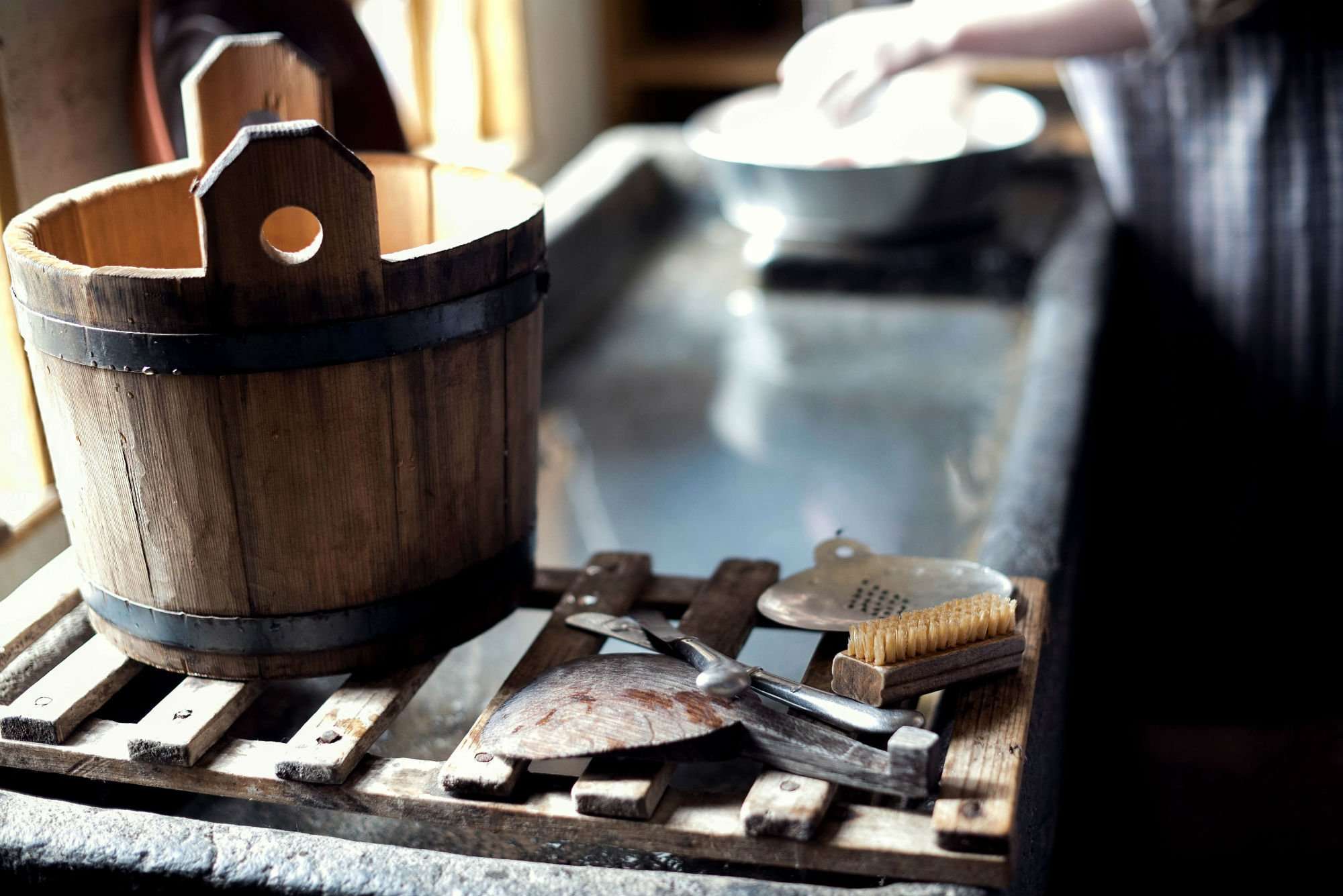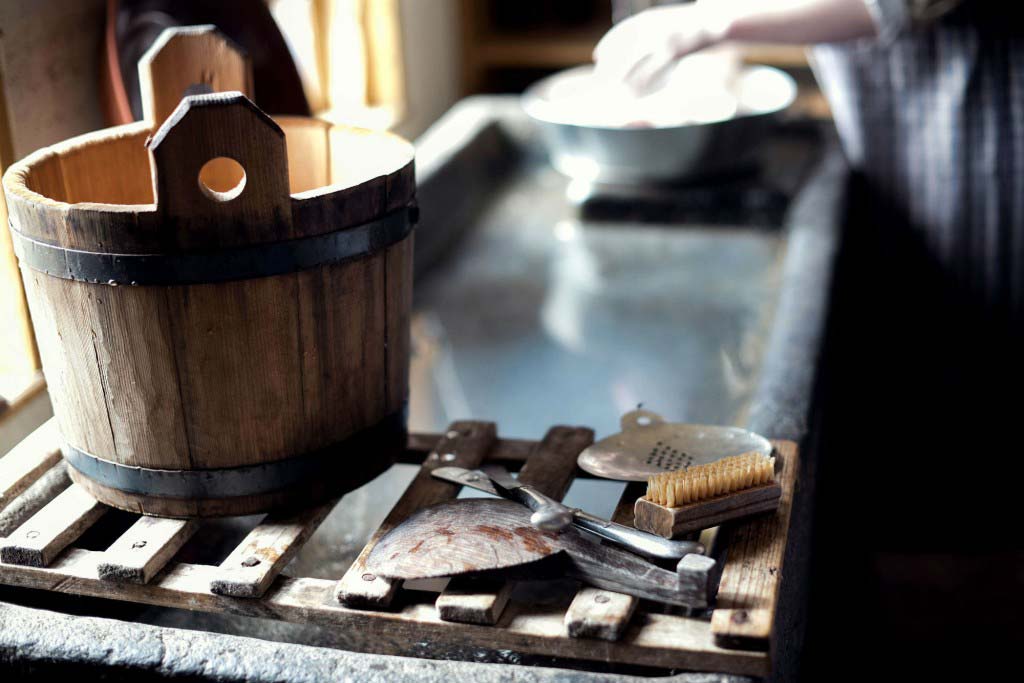Springtime should be a period of celebration for the average eco-warrior – the days are getting in longer, and nature is coming into its own once more following the sparseness of winter. It’s at this time that we take to spring cleaning on-mass – polishing, spraying, buffing – moving from room to room with a mist of chemicals that follows. Add to this the clear-outs that take place – with old and unloved items being removed ready for filling up our already overflowing landfills, and springtime can quickly turn into a season that’s incredibly harmful to the planet. This year, make your spring cleaning truly green, with our seven simple and straight forward tips.
1. Those Old Items – Re-Use, Re-Cycle and Pass Them Along
In your continual battle against the clutter, it’s often necessary to have a significant clearout. To tackle this efficiently, work from room to room, checking those spaces that are often overlooked during the day to day: your attic, shed, storage boxes, and basement. Organize any items that you no longer need into two piles – one with items that you could re-use and up-cycle with a bit of TLC, and another with items to be moved out.
For the first group of items – be inventive, check out online tutorials for making over that unloved piece of furniture; for the items that you’re moving along, consider donating them to your local charity shop (this also reduces the hassle of selling your items on eBay or awaiting collection of ‘free to a good home’ pieces that you’ve posted on Craigslist). You could also ask friends, family, and associates whether they need any of your more commonly used items (such as plates, cups, gadgets, and clothes). Finally, for electrical items, you may need to do a little research to find retailers that run recycling programs (you should be able to find companies that will accept everything from your cell phone and VCR to your decade-old computer).
2. Get Organised With Storage Containers
This time next year, avoid facing a huge clear out of unused items by staying organized with what you own. Invest in storage containers (but remember to make them eco-friendly, opting for bamboo baskets over planet-impacting plastic containers). You could even create your own storage by re-cycling old clothing – t-shirts work great as bags for your odds and ends.
3. Do Away With the Chemical-Infused Cleaning Products and Replace Them With Au Natural Sprays And Spritzers
Cleaning supplies can often contain some plain terrifying ingredients – take ammonium chloride, which can be discovered in toilet cleaner; this chemical is permanently corrosive to the eyes – capable of blinding a person. Or how about tripropylene glycol monomethyl, which you might find in your floor cleaner – this stuff has been scientifically linked to narcosis and kidney failure. Worrying stuff.
While there’s a growing number of eco-friendly cleaning products out there, they still aren’t the ideal, completely environmentally friendly solutions that they present themselves to be. After all, they arrive having traveled half-way around the world in plastic packaging – and have also demanded a hefty carbon footprint to mix and bottle. Suffice to say that to be truly green, you need to create your own, natural cleaning products (as a bonus for doing so, you’ll also save yourself a few dollars in the process).
Mixing your own cleaning products is super straightforward – and your home can largely be cleaned from top to bottom using a mixture of vinegar, hot water, and baking soda (completely non-toxic, kind to the planet, and safe for pets and children). If you want a little fragrance, then you can simply add a couple of drops of essential oils.
4. Particularly Tricky Cleaning Task? Try These Natural Wonders On For Size
For some tasks water, baking soda, and vinegar just aren’t going to cut the mustard – for polishing furniture, you can use olive or jojoba oil; for soap scrum, use salt, water, lemon, and borax and finally for a great, fragrant all-rounder, try soap nuts (capable of cleaning everything from hair to your clothes).
5. Tissue Paper and Paper Roles – Ban Them From Your Cleaning Caddy
Cleaning routines are made all the more harmful for the environment when you rely on reams and reams of tissue paper and toilet rolls. Not only are they using up a shrinking number of trees, but they’re also wasting water when they’ve flushed away (or bulking out your bin and being sent off to a landfill). To replace the paper with cloths and/or sponges. Whilst you’re at it, you might also want to reconsider that disposable sweeper and mop – purchasing more robust, reusable cleaning tools instead.
6. Put Together a Spring Clean Dream Team of Tools
Along with that a reusable mop and broom, you should also grab the following items:
A stiff brush – Essential for scrubbing stubborn stains when you can’t rely on a chemical to melt them away
A used toothbrush – For reaching into those cracks
A wet-vac – Ideal not only for floors but also for wiping down those window and door frames
7. For the Year Ahead – Keep Up-To-Date with The Springtime Tasks
Spring cleaning is a pretty long process with each room generally taking between 2 and 6 hours. To fully spring clean an entire house, you’ll likely need to split your chores over the course of a few days. For the upcoming 12 months, why not tackle these tasks month by month; you could cover windows and doors in June, baseboards, and walls in July, and so on. You could also split this by room, instead of by chore type.
Last update of the article: 12/11/2020.
Ready for a truly green spring? Let us know how your annual purge goes and if you have any tips for a more eco-friendly cleaning routine or ideas for re-using and re-cycling your household items, leave a comment below.

About the Author
Jen is your go-to guru for crafting a cozy, green cocoon. 🪴 Her dive into sustainable building wasn’t just about saving the planet—it started as a mission to make family movie nights eco-friendly (and to ensure the popcorn was the only thing getting heated!). With a knack for breaking down the jargon, Jen turns eco-lingo into everyday language. Swing by the Green Living blog for a mix of earth-loving advice and home improvement hacks. Whether you’re just dipping your toes into green waters or you’ve been swimming in the deep end of DIY projects, Jen’s here to guide, giggle, and remind you that every eco-choice is a step towards a planet that thanks you… and maybe even sends a rainbow your way! 🌈


